Recent Articles
Popular Makes
Body Types
2016 Kia Optima First Drive and Review
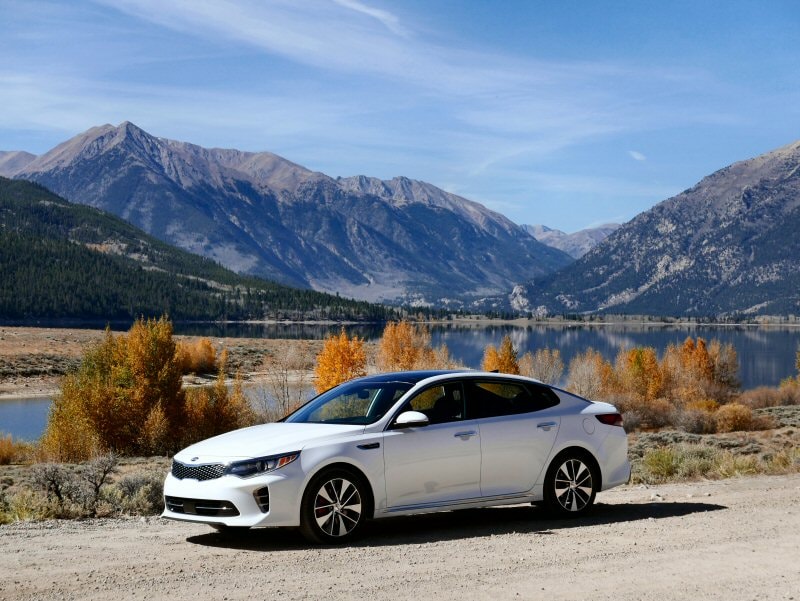
2016 Kia Optima front profile ・ Photo by Benjamin Hunting
The 2016 Kia Optima arrives at a pivotal time in the automaker's existence. With a mandate to further distance itself from corporate parent Hyundai, Kia is looking to add new metal to showrooms and fill gaps in its line-up without relying too much on borrowed platforms and shared technologies. When vehicles do share a common gene pool - like the Optima and the Sonata, Hyundai's popular mid-size sedan - the brand's ability to leverage its in-house styling chops as a separating wedge has become increasingly important in the American market. The all-new Kia Optima trades in the dowdier duds of the Sonata and instead embraces a sharper visual edge that is as distinct as the thick-rimmed glasses worn by company design chief Peter Schreyer. As I discovered after spending the day behind the wheel of the 2016 Optima in Aspen, Colorado, this sedan has been tagged by Kia to accomplish a long list of important tasks, and for the most part it succeeds. Although not a threat to disrupt the ruling family four-door order, the Optima comes across as a compelling alternative for those who appreciate that high quality design doesn't have to come with a mile-high price tag.
Shark Suit In A Sea Of Minnows
A year after the previously fashion-forward Hyundai Sonata took a calculated step back to the mean, the 2016 Kia Optima feels like a renewal of the faith that not all inexpensive family cars have to be boring to look at. Even in its base trim, the Optima is a collection of eye-catching cues that assemble into a form that is somehow both graceful and imposing at the same time. Seen from the front the Kia offers an angled, honeycomb-laden grille that's complemented by shark-fin headlights hewn into the front fenders and the decision to replace the older model's fog lights with cooling ducts for the front brakes (which also serve to improve the overall aerodynamics of the car). I was told that the company felt the car's available LED lighting, combined with its split HID headlights offered a comprehensive enough package to illuminate the way forward (you can also find LEDs in the car's taillights). As dapper as the Optima's first impression might be its real strength is found in profile, where a long roofline teases at the potential of a hatch only to end in a pleasingly upturned trunk lid. The proportions of the car have been enhanced by a stretched wheelbase (0.4 inches) and a wider track (1.2 inches), and taken together they go a long way towards defining the Kia sedan's impact as more befitting a luxury car than a daily commuter.
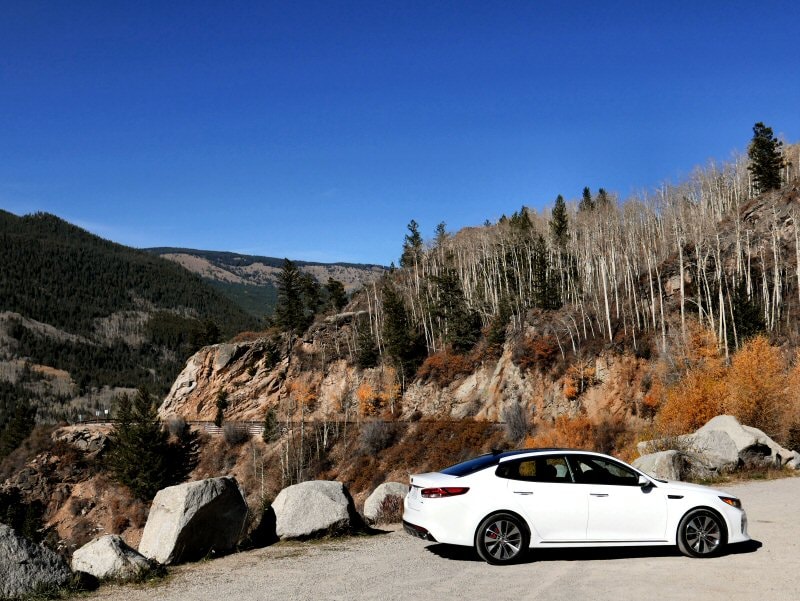
Mid-Size Push To Full-Size Interior
Any time you add to a car's wheelbase you're going to benefit from a more spacious cabin, and the 2016 Kia Optima divvies up its newfound volume by dumping it squarely at the feet of those riding in the rear seat. The Optima is by no means a large car, nor does it feel cumbersome out on the road, but the back bench offers excellent accommodations for its class. You have to look beyond the numbers to see it, as the Kia is fact smaller-by-the-ruler than several of its rivals, but with door panels and seatbacks carved out to enhance the sensation of space in two of the sedan's three dimensions, spending time in the rear seat brings to mind full-size comfort.
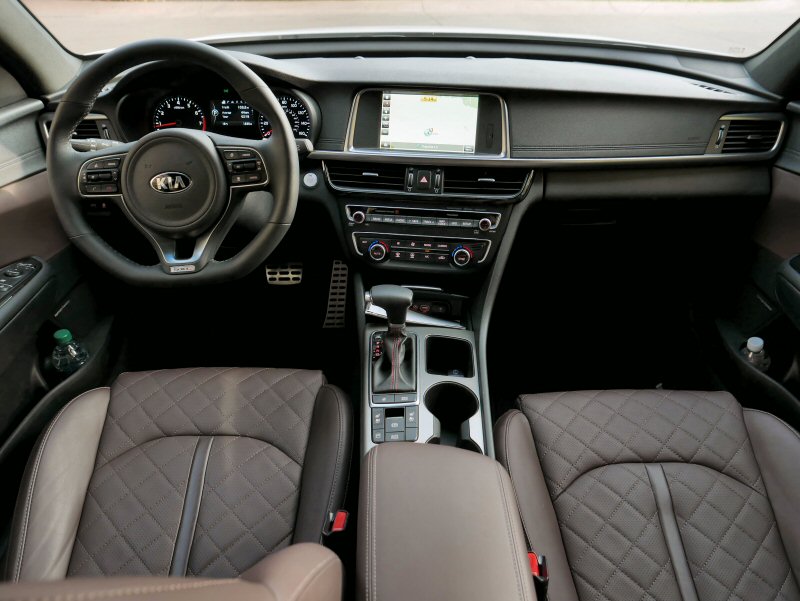
Photo by Benjamin Hunting
Not Quite Luxury, No Matter The Price
As upscale as the 2016 Kia Optima's exterior styling suggests the car might be, it would be a stretch to push the sedan's overall experience as anything approaching luxurious. Kia is to be commended for the extensive list of features and comfort gear that can be had with the car, including items such as a heated steering wheel, a panoramic sunroof, elegantly-quilted leather seats, and heated and cooled front buckets. Still, when inside the priciest Optima - the $36,615 SXL - the overall experience doesn't really rise above the sum of its parts. Everything one could want in a fully-loaded family car is present and accounted for, but the Kia's character never really transcends 'good' on its way to 'great' in the way you'd expect a premium car to do. It's hard to say whether this is really a fault, as the Optima isn't targeted at would-be luxury shoppers. Drive the SXL back-to-back with the entry-level LX (MSRP $22,665) and you'll definitely notice the difference in interior accoutrements, but I'd be surprised if you found yourself overly charmed by the pricier model's competent yet unmemorable presentation and materials.
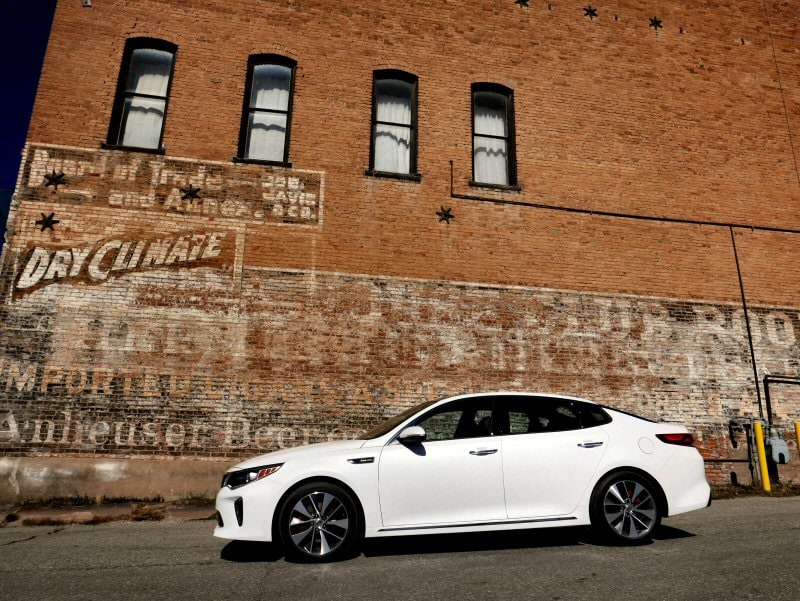
Good Infotainment, Bad Android Auto
One area where the 2016 Kia Optima has nothing to apologize for is its Uvo infotainment system. The touchscreen Uvo interface is available with navigation, satellite radio, and Bluetooth connectivity features, and unlike some of the systems offered by its rivals it leaves important tasks such as adjusting the car's climate controls to an array of buttons and knobs on the center stack. It's a cheerful-looking design, and one that is relatively straightforward in regular use. Unfortunately, it's possible to completely wipe away the Kia Optima's excellent Uvo experience by downloading and installing the new Android Auto feature on your smart phone. If I hadn't been harangued by pop-ups on my device every single time I connected it to the car's USB charge port, I probably would have never seen a reason to use this new system, but I gave in to the irritation and set it up. Instant regret. As soon as the link was active, Android Auto took over the Uvo display, cutting me off from the navigation route I was following and making it impossible to access the satellite radio controls. In their place was a generic Android menu that offered me Google Maps, music streaming, and a few other phone features, none of which seemed to remember that I was in fact relying on the car's nav system to get me to the hotel after a long day of driving. Also, once connected in this manner the car automatically linked its Bluetooth system to my device, and then renders said phone completely useless for any purpose until I physically disconnected it. This meant that even from the passenger seat it was impossible for me to access any of my apps. Altogether it was a thoroughly negative experience with this new system, made worse by neither the car nor the Android Auto app asking my permission at any stage of the pop-up or phone-bricking process.
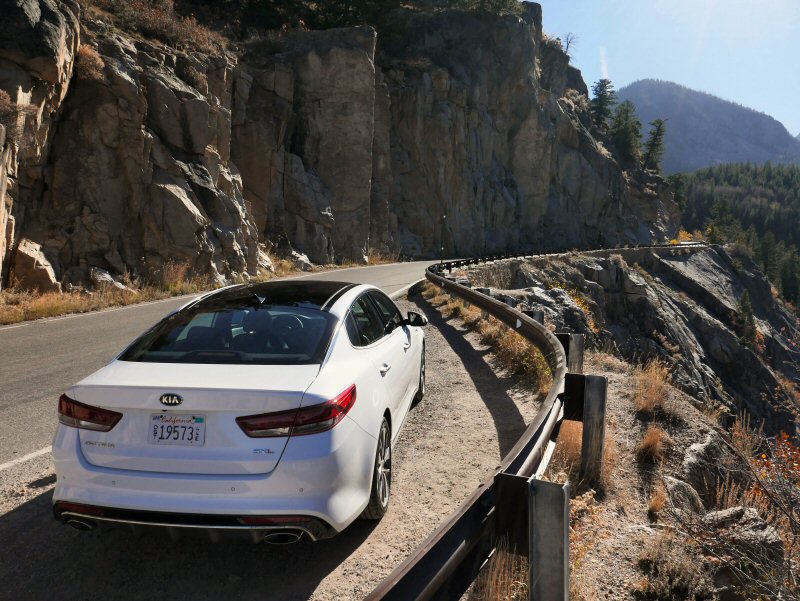
Photo by Benjamin Hunting
Two Turbo Engines, One Easy Choice
The 2016 Kia Optima is offered with a trio of four-cylinder engine options, two of which are turbocharged. The top and the bottom members of the Optima's drivetrain list are carried over from 2015, which means that base models are still motivated by a 2.4-liter unit that's good for 185 horsepower and 178 lb-ft of torque while the mightiest version of the sedan boasts a 2.0-liter turbo that generates 245 horses and 260 lb-ft of twist. Sandwiched in between is a new 1.6-liter turbocharged engine that pushes out a little less horsepower as the base 2.4-liter (178 ponies) but boasts a slight bump in torque (195 lb-ft). Why pay more for what at first appears to be a near-clone of the larger lump? It's a good question. Kia points to the bump in fuel mileage between the two cars, with the 1.6 featuring 32-mpg in combined driving compared to the entry-level's 28-mpg rating, an achievement made possible by the adoption of a seven-speed, dual-clutch automated manual gearbox exclusively for this new motor. I didn't have the chance to sample the 2.4 and the 1.6 back-to-back - Kia didn't bring any base models to Aspen - but I've driven the naturally-aspirated four-cylinder in other Kia and Hyundai products and not found it to be particularly lacking. The addition of a seven-speed in place of the six-speed that's found elsewhere throughout the Optima line-up isn't really that much of a plus either, as I found no real improvement in shift quality from the more advanced gearbox. Compared to the 245 horsepower 2.0-liter turbo, the 1.6 is much noisier at speed, especially with the throttle pegged while merging or negotiating a mountain pass. Although not overly quick in a straight line, the 2.0 acquitted itself well during the day, even when dealing with the incredible elevations that Colorado's Rocky Mountains are famous for, making it my pick of the three motors for those who can make peace with its 25-mpg combined rating. (Also of note: no irritating automatic engine start/stop feature for the Optima, for which I am eternally grateful.)
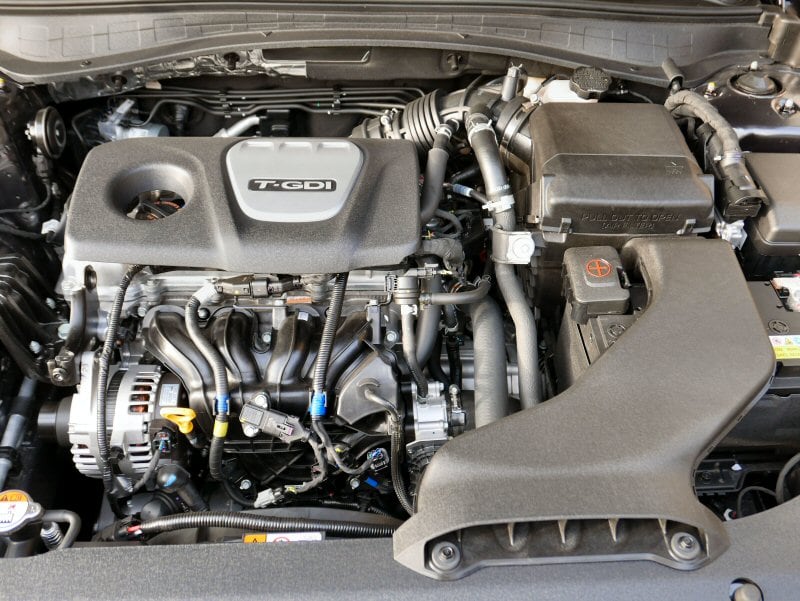
Photo by Benjamin Hunting
Smooth And Competent On-Road Character
Even with the larger of its two turbo engines calling the shots the 2016 Kia Optima is far from a sport sedan. In a wise move, Kia has decided to skip any attempt to deliver race-ready handling to a mid-size sedan demographic that cares far more about day to day comfort, which means that the Optima spurns a stiff suspension system in favor of pleasing compliance and respectable highway stability. The automaker has attempted to create some distance between entry-level and more expensive models by reserving its rack-mounted electric power steering system for the SXL trim (all other models get column-mounted assist), but it's difficult to suss out the difference in regular driving. You won't be carving any corners in the Kia Optima. However, I doubt that's why anyone was interested in the car in the first place, and the focus on what really matters to family buyers is refreshing in an industry that's often more interested in selling you what you wish you were driving rather than what you actually need.
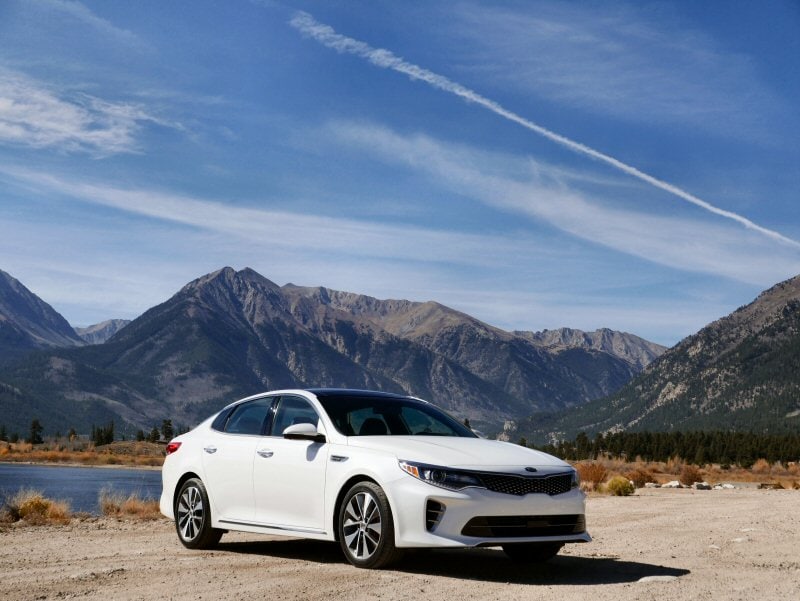
Photo by Benjamin Hunting
A Distinct Lack Of All-Wheel Drive
An interesting side effect of the 2016 Kia Optima's disconnect from marketing hoopla is the absence of all-wheel drive on the options sheet. AWD has become a critical tool for premium brands seeking to convince sedan shoppers that they should spend more money at ordering time, with the feature typically touted as being absolutely essential for anyone who might occasionally encounter snowy road conditions during the winter months. Unfortunately, all-wheel drive doesn't just add a few extra dollars to the window sticker - it also tacks on extra weight and complexity that are frequently at odds with overall fuel efficiency. The mid-size sedan segment has been largely all-wheel drive agnostic, with only the Ford Fusion and the Subaru Legacy making this feature available to those shopping for an affordable family ride. Here's hoping that the luxury AWD push doesn't turn too many planning department heads at Kia in the near future, because there's simply no need to increase fuel consumption and bloat the Optima's curb weight with technology whose benefits can be mostly replicated with a good set of winter tires.
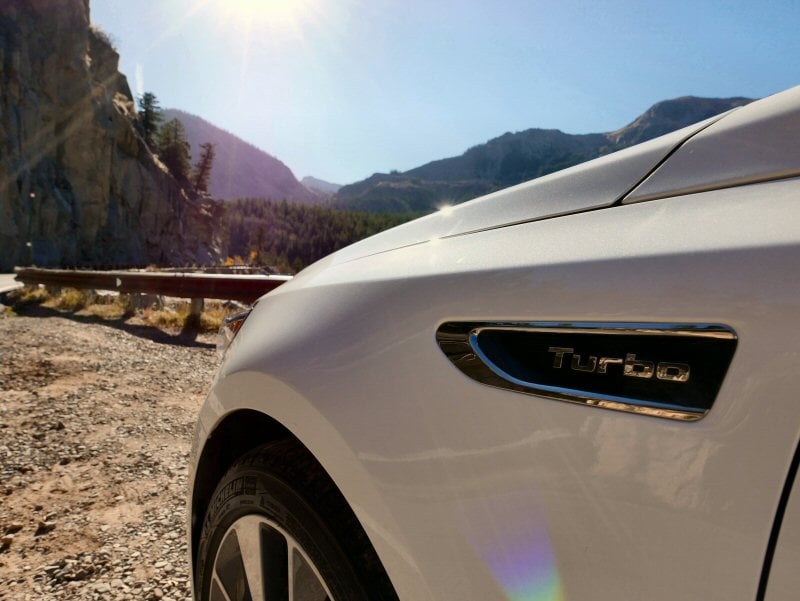
Photo by Benjamin Hunting
Advanced Safety Moves To The Forefront
The 2016 Kia Optima has seen significant investment in its active safety features as compared to the generation of sedan that preceded it. A new driver's knee airbag up front helps prevent injuries resulting from impact with the dashboard, but there's flashier stuff to be found inside the Optima too: namely, an automated braking system tied in to a forward collision warning feature that can bring the car to a complete stop if traveling at 50-mph or less (with partial activation at speeds greater than that). It's tied in to the adaptive cruise control feature available on certain Optima models, which itself boasts the ability to start and stop in bumper-to-bumper traffic. Just like in 2015 the new Kia Optima also comes with a blind spot monitoring system, and this is joined by a fresh lane departure warning system that keeps an eye on the white and yellow lines on the road.
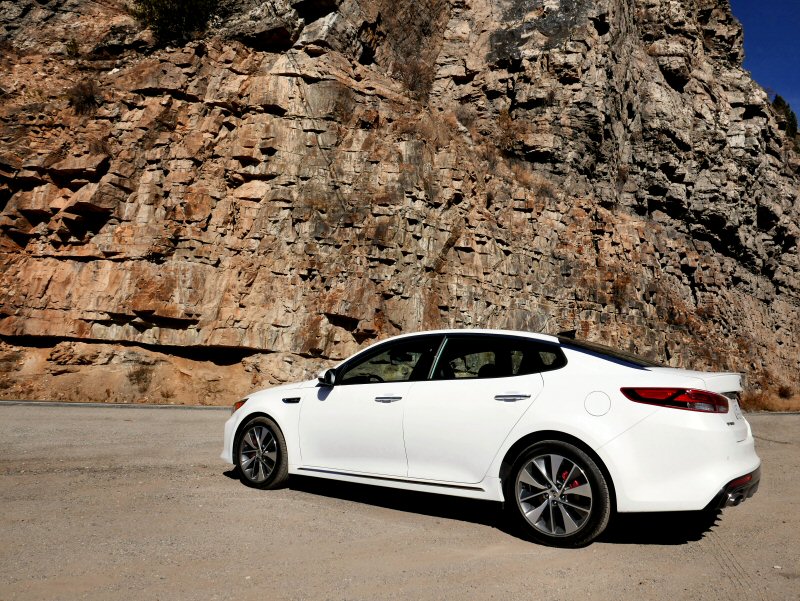
Photo by Benjamin Hunting
2016 Kia Optima Pros / Cons
2016 Kia Optima Pros / Cons Pros: • Great-looking design • Affordable pricing • Large rear seat • Comfortable ride • Decent fuel efficiency Cons: • Android Auto offers more irritations than advantages • Mid-tier turbocharged engine not a clear upgrade over base drivetrain • Interior material quality comes across as average • 1.6-liter turbo is noisy when pushed
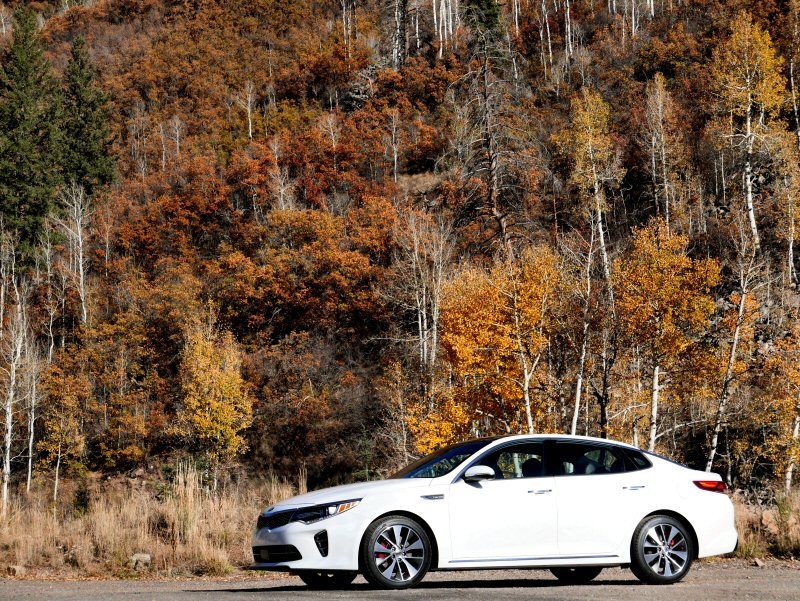
Photo by Benjamin Hunting